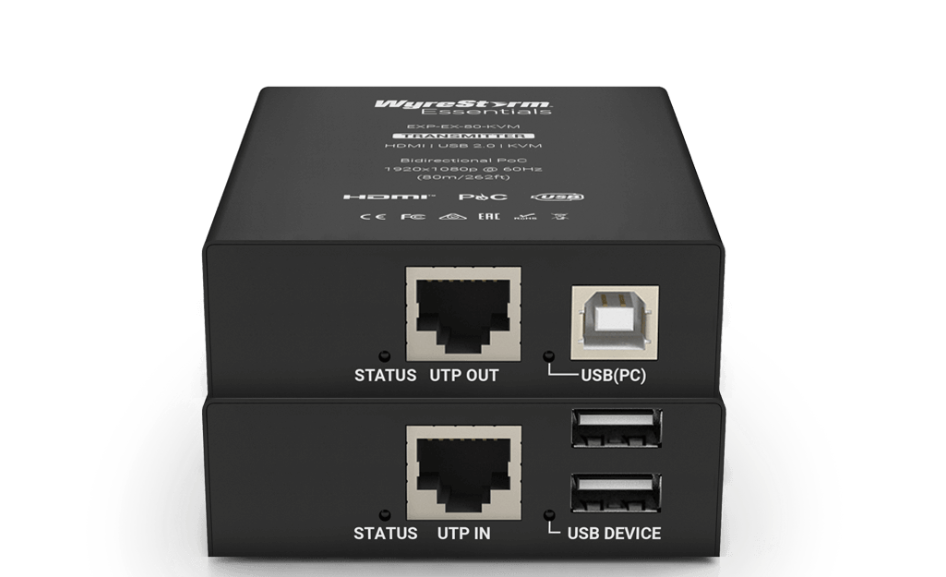HDMI-based KVM extenders are specific extenders tailored for systems using HDMI as the primary video interface.
These extenders leverage HDMI technology to transmit high-definition video, audio and control signals over extended distances, making them ideal for various applications.
Key Features And Capabilities
- High-Definition Video Quality
HDMI-based KVM extenders are engineered to deliver high-quality video and audio signals. They support HD and 4K resolutions, ensuring the remote user experiences sharp, clear visuals and audio fidelity on par with being physically present at the host system.
- Long-Distance Transmission
One of the primary functions of these extenders is to transmit signals over extended distances. HDMI-based solutions can cover distances ranging from hundreds of feet to several kilometers, depending on the type of extender and cabling used.
This allows for centralizing critical systems while providing remote access from a secure and comfortable location.
- Plug-And-Play Installation
Most HDMI-based KVM extenders offer a plug-and-play installation process. Users can simply connect the transmitter unit to the source computer and the receiver unit to the remote display and control peripherals. There’s typically no need for additional software installation, making setup quick and hassle-free.
- Bi-Directional Communication
HDMI-based extenders facilitate bi-directional communication besides video and audio.
Users can control and interact with the remote system using their keyboard and mouse while receiving real-time feedback on the remote display.
This two-way communication is vital for system maintenance, troubleshooting, and server management.
Applications Of HDMI-Based KVM Extenders
- Data Centers
Data centers often house critical servers and networking equipment that require constant monitoring and maintenance.
HDMI-based KVM extenders enable IT professionals to manage these systems efficiently from a central control room while maintaining data security.
- Control Rooms
HDMI-based extenders are pivotal in managing and monitoring complex systems in control rooms for industries such as broadcasting, utilities, and transportation.
Operators can access and control various computers and displays from centralized workstations, ensuring rapid decision-making and response times.
- Healthcare
In medical environments, remote access to diagnostic equipment and computer systems is crucial for healthcare professionals.
HDMI-based KVM extenders provide a means to interact with these systems safely and sterilely while maintaining high-quality images and sound.
- Remote Work
The rise of remote work has made HDMI-based KVM extenders invaluable for professionals who need to access their office computers from home or other remote locations.
This technology ensures employees can maintain productivity and collaborate effectively, even remotely.
Final Thoughts:
HDMI-based KVM extenders are indispensable tools in the modern world of technology and connectivity. Whether in data centers, control rooms, healthcare facilities, or remote work setups, these extenders improve workflow efficiency, enhance productivity, and streamline system management.

